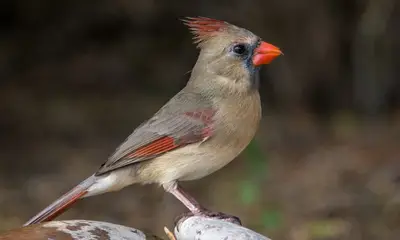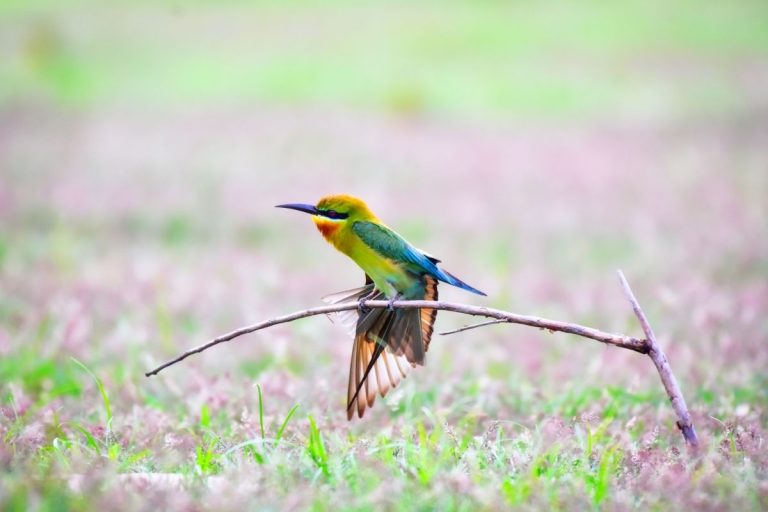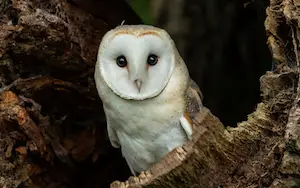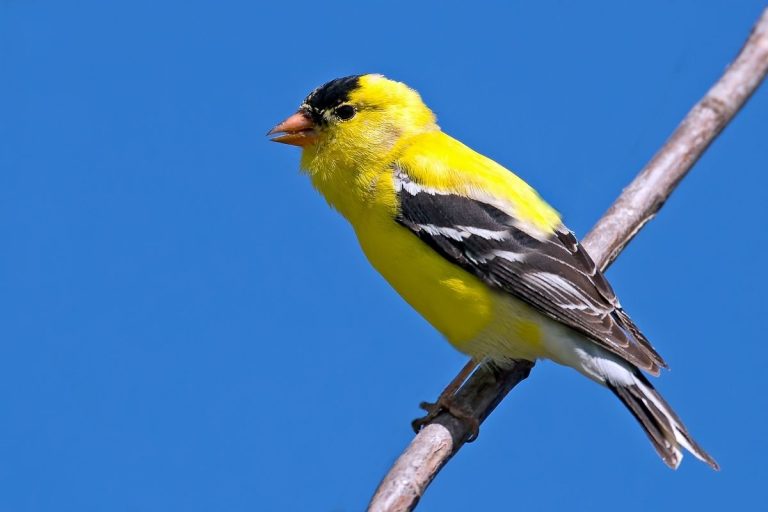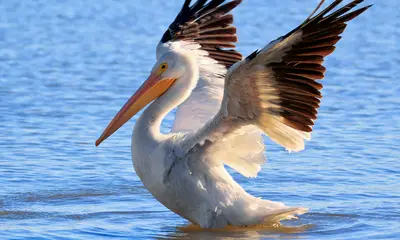21 Stunning Birds With LONG NECKS (Photos & Key Facts)
Did you spot a bird with a long neck? In that case you’ll probably want to know what species you saw.
To help you identify the bird you saw, we’ll cover the most common types of birds that have long necks in this article.
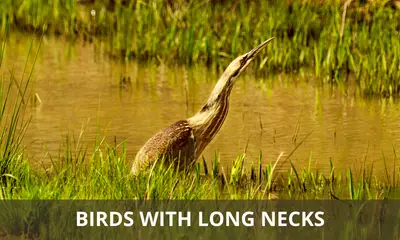
What types of birds have long necks?
The 21 most common birds with elongated necks are:
- Great Egret
- Snowy Egret
- Little Blue Heron
- Great Blue Heron
- Cattle Egret
- White Ibis
- Roseate Spoonbill
- American Flamingo
- Double-crested Cormorant
- Tricolored Heron
- Wood Stork
- Whooping Crane
- Trumpeter Swan
- Snow Goose
- Cassowary
- Ostrich
- Emu
- Limpkin
- Anhinga
- American Bittern
While many of these birds are found in North America, we also included some that hail from other parts of the world.
Now let’s dive into the details, and take a closer look at each of these species in order to get the full scoop:
Great Egret
Scientific name: Ardea alba
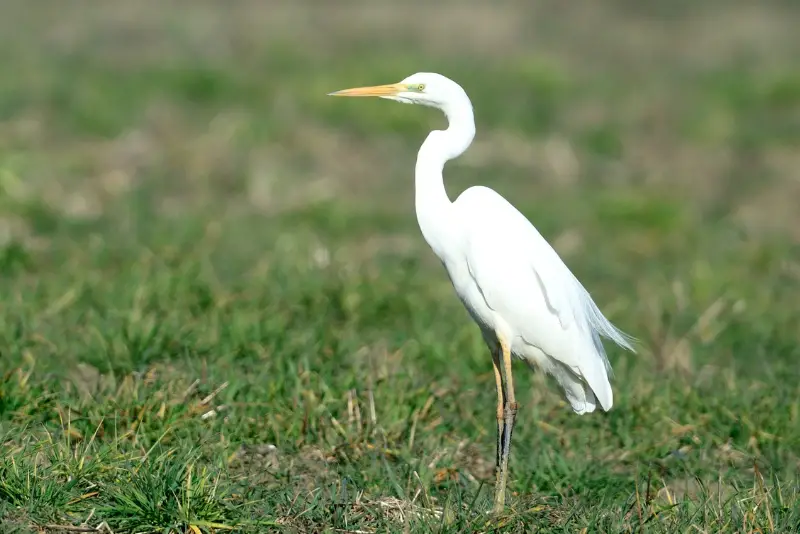
The Great Egret has a range that spans nearly the whole planet, and can be found on almost all continents.
This is a big heron that has entirely white feathers, contrasting with extended black legs and feet, as well as a thick, yellow bill.
During the spring and summer breeding seasons, the Great White Egret grows a plume on its back that extends all the way to the tip of its tail.
It lives in both saltwater and freshwater habitats, and often nests in large colonies on the banks of marshes, lakes, and rivers.
These birds forage in any type of shallow water, including ponds, lakes, rivers, estuaries, as well as rice fields and other flooded areas.
Snowy Egret
Scientific name: Egretta thula
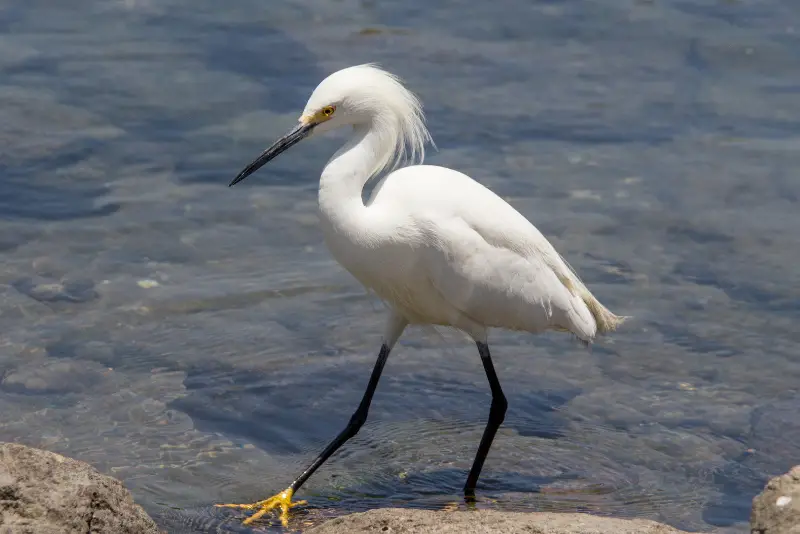
The Snowy Egret has become an increasingly common breeding bid due to aggressive conservation efforts that were necessary because this heron species was systematically hunted in previous centuries.
This little white heron stands out due to its slim black bill and bright area between the eyes and nostrils. It has long legs and yellow feet, which distinguish it from other herons.
In adults, the feet are a brilliant golden yellow, while the legs are totally black. It is thought that the brightly colored feet help to attract small fish and other prey.
The legs of juveniles have a predominant greenish yellow color, with some black areas on the front of the leg.
It is found in practically all types of wetland environments, from small ponds to saltwater and everything in between.
During the summer, it is a rare to relatively common breeding bird in North America.
Little Blue Heron
Scientific name: Egretta caerulea

While adult Little Blue Herons are slate blue, young birds are entirely white during their first year.
Juveniles can be distinguished from other white herons by their dark bill and green legs.
These small herons are common breeding birds in North America that can be seen year-round.
These birds feed on small fish, mollusks and crustaceans, with crayfish forming a large part of their diet.
They prefer an aquatic habitat, where they hunt in the shallows, and are rarely seen away from water.
Great Blue Heron
Scientific name: Ardea herodias
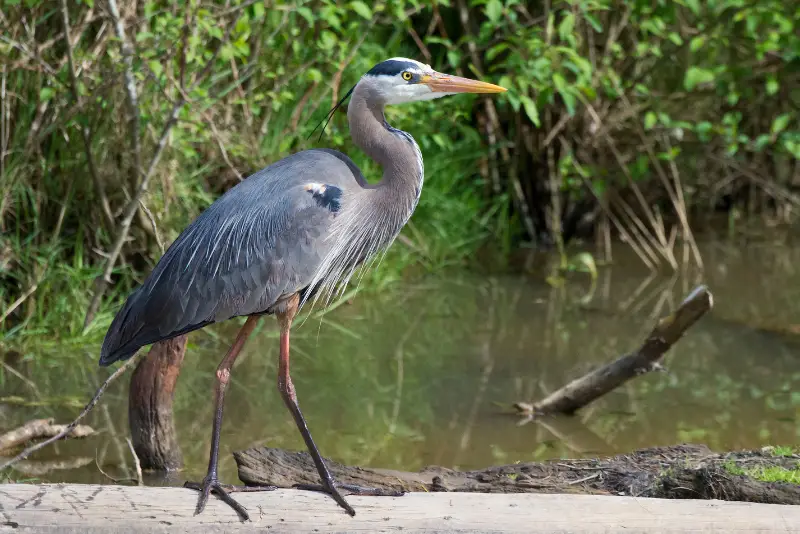
The Great Blue Heron is one of the most common herons in North America, where it can be seen year round in most areas.
This heron is a very large bird with a wingspan of up to 6 feet, and a neck that measures up to 18 inches long.
It is almost entirely blue gray, except for a white throat and eye stripe, as well as dark gray wing feathers.
This large heron likes to hunt for small mammals and fish by wading in the shallows of estuaries, mud flats and marshes along the seaboard.
It waits patiently for a suitably sized fish to come close enough to be grabbed with its long, yellow bill.
Cattle Egret
Scientific name: Bubulcus ibis
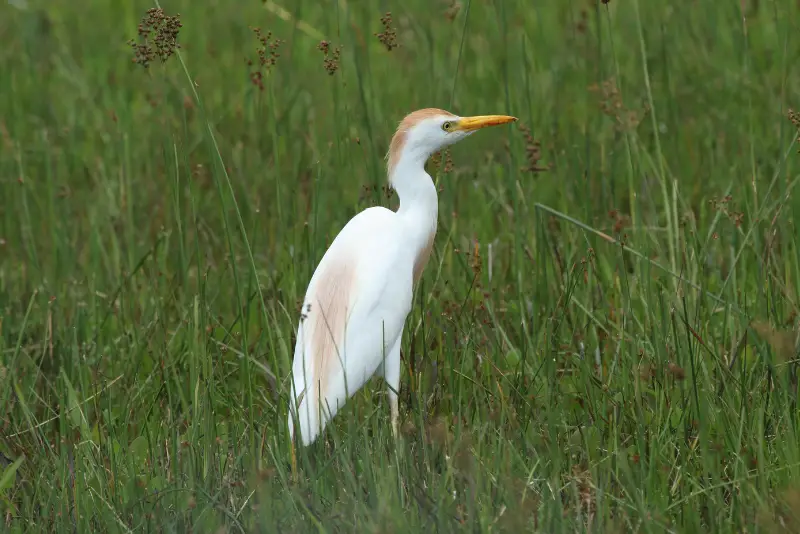
The Cattle Egret is a relatively new species in the New World that is originally found in Europe and Africa.
Nobody knows how these birds crossed the Atlantic, but they were first discovered breeding in Brazil, and later in North America, where they first appeared in the 1950s.
They have been very successful at colonizing the Americas, and in contrast to other herons, they regularly forage in dry habitats, including high altitude areas.
This is a medium-sized heron that is entirely white, except for the breeding season, when adults develop orange plumage on the back of their head, back, and chest.
The legs and the beak are yellow, but at the peak of the breeding season, they take on a ruddy hue.
It inhabits a wide range of wetland ecosystems, ranging from shallow saltwater zones to freshwater ponds, swamps, and lakes.
In addition to wetlands, this bird also does a significant amount of its foraging in dry areas, such as pastures, where it likes to follow cattle and feed on the insects disturbed by the livestock.
White Ibis
Scientific name: Eudocimus albus
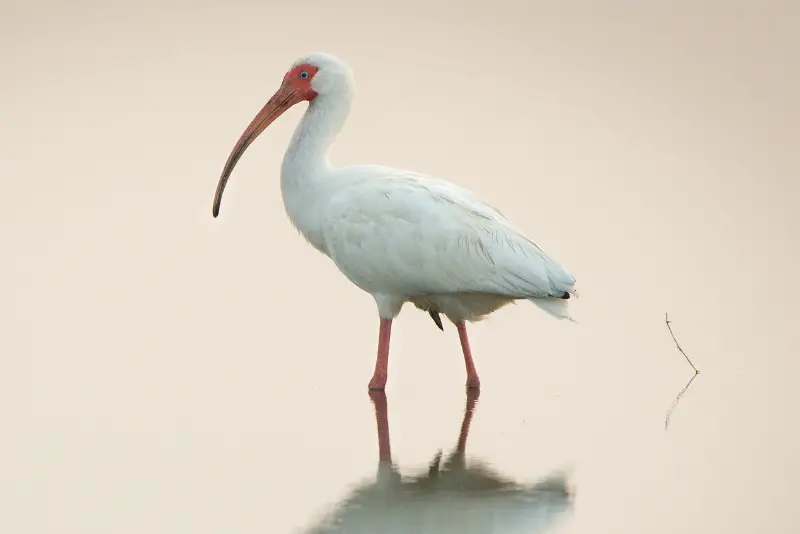
This species is easy to recognize due to its entirely white color combined with a long orange beak. Also note that its bill is curved downwards.
The black wing tips are not really apparent until it takes to the wing.
During the first two years of their lives, immature White Ibises have a chocolate brown body with light streaks and a pale orange beak.
While it is most commonly found in coastal areas, the White Ibis prefers to forage in freshwater habitats.
This shore bird feeds on fish, insects, crayfish, and other crustaceans. Crayfish form a large part of its diet in areas where they are common.
They nest in large colonies in forests located close to wetlands. They are extremely social, and like to forage in groups of 20 birds or more. In fact, it’s rare to see a solitary White Ibis.
Roseate Spoonbill
Scientific name: Platalea Ajaja
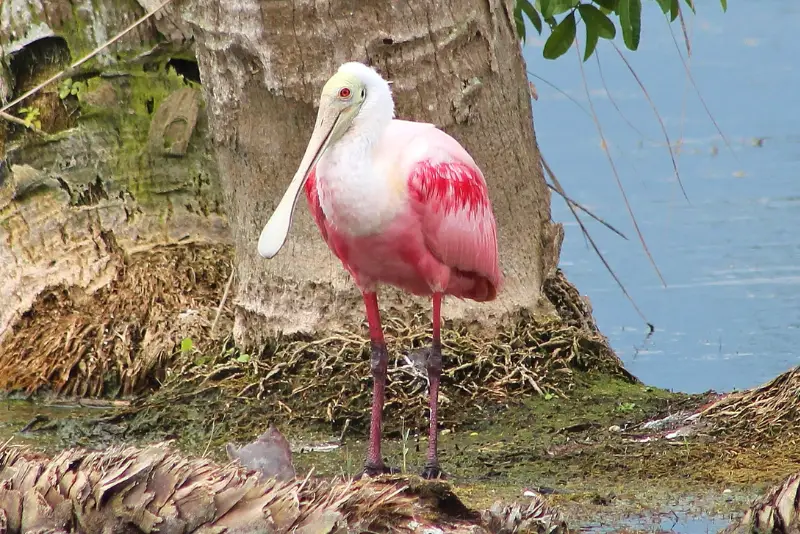
Roseate spoonbills are medium-sized wading birds, similar to storks but smaller.
The adults are white on their backs and face, while the rest of their plumage is bright pink.
The Roseate Spoonbill is a large pink bird that can be found in Florida and other southern states.
However, it should be noted that the exact shade of pink can vary a lot, depending on its diet.
The more shrimp it eats, the more pink its plumage becomes, due to the carotenoid substances found in shrimp.
They are sometimes mistaken for flamingos because they look similar, but keen ornithologists will notice that flamingos have a short, angled bill, while spoonbills have a long, spatulate bill that has a broad “spoon” at its end.
The best place to see these gorgeous birds is in the Everglades, which has more than 200 breeding pairs.
American Flamingo
Scientific name: Phoenicopterus ruber
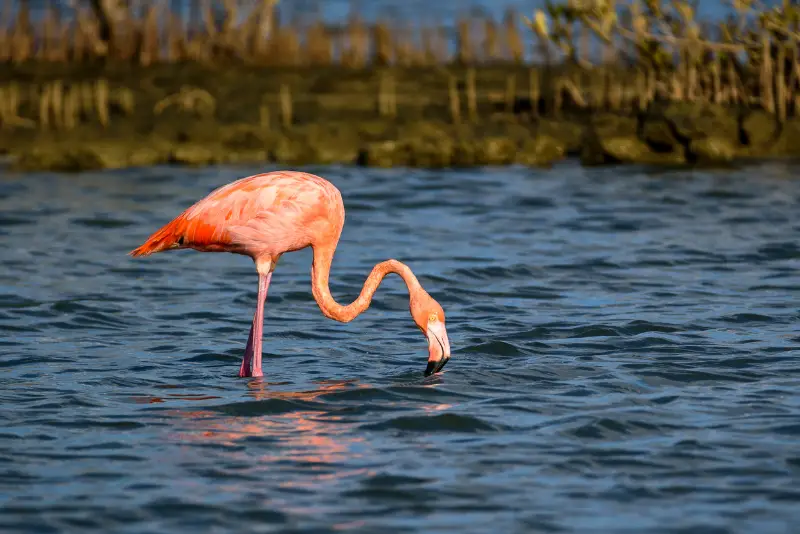
This shorebird is a member of the flamingo family, Phoenicopteridae, that is found in North and South America.
Somewhat stereotypically associated with Miami, the American Flamingo is found along the coasts of the Caribbean, the Gulf of Mexico, as well as northern parts of South America.
It is thought that the population of American Flamingos in North America is descended from individuals that escaped from parks and zoos. It is most often seen in the Everglades and other areas with salt flats.
This bird is similar to its relative, the Greater Flamingo, but the latter is paler in its coloration.
Double-crested Cormorant
Scientific name: Phalacrocorax auritus

The Double-crested Cormorant has an elongated neck and pale blue eyes. It is commonly found on coastal waters.
This cormorant likes to gather in large flocks that roost on trees close to water. It is a skilled diving bird that hunts fish with its large, hooked bill.
When a group of cormorants flies together, they like to form up in a V shaped formation.
Often these V-shaped formations can be seen in the evening, when they fly to their roosting spots.
Tricolored Heron
Scientific name: Egretta tricolor
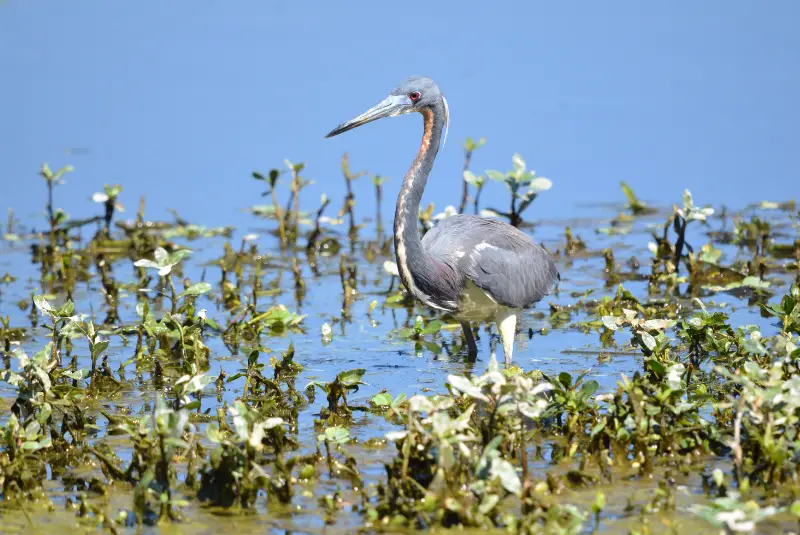
The Tricolored Heron is a medium-sized heron that has a blue-gray upper side and chest, as well as a white belly.
Its preferred habitat are estuaries and salt water marshes. It likes to nest in colonies, and sometimes forms colonies with other heron species.
This shorebird hunts fish and invertebrates in shallow waters, usually by patiently waiting until its prey comes within reach.
Wood Stork
Scientific name: Mycteria americana
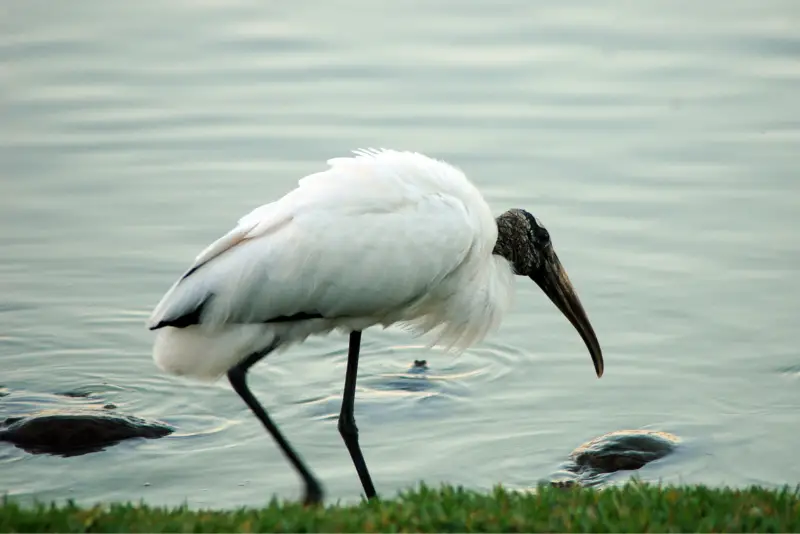
It’s easy to identify a Wood Stork if you can see it up close, due to its entirely white plumage combined with a bald, black head.
Similar to the White Ibis, it has a bill that curves slightly downwards. However, in contrast to the White Ibis, the Wood Stork has a black bill.
While the tail and wing tips are black, this is usually only apparent when you see this bird in flight.
The Wood Stork is a large bird, similar in size to a Great Blue Heron, but is easily distinguishable from that species by its curved long beak.
Unfortunately, their populations have been in decline over the past decades, which is a trend that it shares with many other wading birds.
It feeds on frogs and other amphibians, fish, and aquatic invertebrates. It likes to nest in large colonies in old trees close to foraging areas.
Whooping Crane
Scientific name: Grus americana
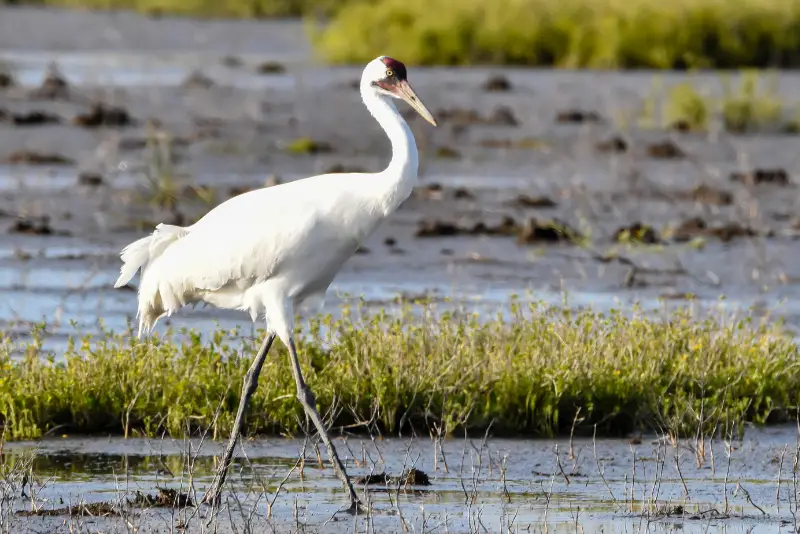
The Whooping Crane was almost at the edge of extinction in the 1930s, with less than 20 individuals remaining.
However, sustained conservation efforts have brought it back to a current population that numbers 600 individuals.
Adult birds have a completely white body, with a red cap that consists of bare skin. In contrast to adults, juvenile birds have a reddish brown color.
While the population of these birds has made an amazing comeback from the edge of extinction, it is still a critically endangered species, and in need of continued conservation efforts.
It is similar in stature to its relative, the Sandhill Crane, which is a breeding bird in Canada and northern parts of the USA.
Trumpeter Swan
Scientific name: Cygnus buccinator
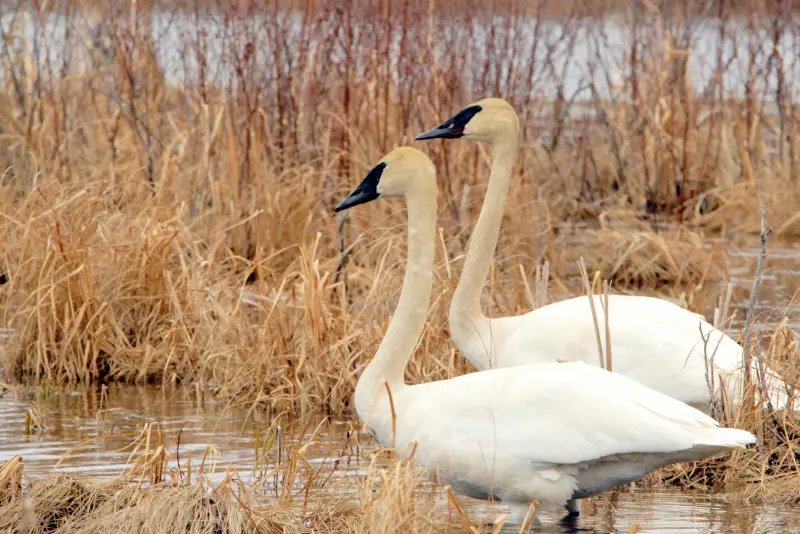
The Trumpeter Swan is a breeding bird of Canada and the northern United States, and is seen in southern states as a rare migratory bird during the winter.
Trumpeter Swans have a long s-shaped neck, but since it is usually fully extended, it looks more straight.
They are among the largest waterfowl found in North America, and adults are entirely white with a black beak, as well as a black area of skin between the eye and the bill.
In contrast to adults, juveniles are pale gray streaked with white.
Trumpeter Swans prefer shallow freshwater habitats, where they can use their extremely long neck to reach their preferred food: aquatic plants.
Snow Goose
Scientific name: Anser caerulescens
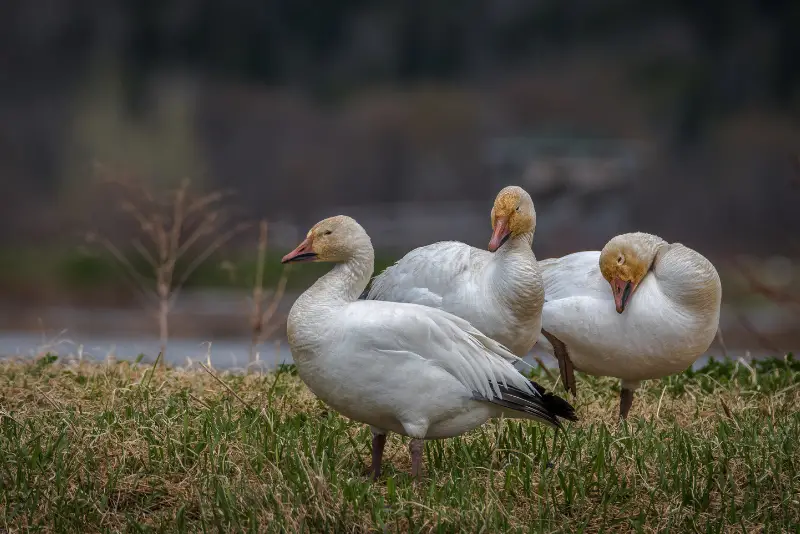
Similar to Trumpeter Swans, Snow Geese are water birds with a lengthy neck (though it isn’t quite as long).
The Snow Goose exists in two color morphs, one of which is entirely white, while the other is blue gray with a white head.
The Arctic population of Snow Geese has gone up significantly in the past few decades, and as result it is also much more common in its wintering grounds.
Wintering Snow Geese like to feed on harvested farmland, such as wheat fields, where they feed on leftover grains. In some cases they also forage on rice fields.
Cassowary
Scientific name: Casuarius casuarius

Cassowaries are native to Australia, New Guinea, and parts of Indonesia and Papua New Guinea.
They are one of the largest bird species in the world, standing up to six feet tall. They are also flightless, and rely on their powerful legs to run rapidly.
Cassowaries have incredibly long necks that are usually bent close to their large bodies.
However, when a cassowary reaches up with its head, this reveals the long neck it was previously hiding.
They are also extremely powerful, which makes it easier for the cassowary to attack and catch its prey.
Cassowaries are notoriously aggressive and dangerous birds, and their long neck just makes them an even more threatening bird to encounter.
Ostrich
Scientific name: Struthio camelus

Ostriches are among the heaviest living land animals. They weigh up to 280 pounds, making them the heaviest birds in the world.
Ostriches use their powerful legs to defend themselves, but their necks are also quite impressive.
The Ostrich’s neck is about three times longer than its body, giving it a very distinctive shape.
It is believed that Ostriches’ necks evolved over time to help them balance on the ground, especially while they are running at high speed (where they can reach speeds of over 40 mph!).
Emu
Scientific name: Dromaius novaehollandiae

The emu is one of the largest birds alive today. They are found throughout Australia and are flightless birds that rely on their long legs to run at high speeds.
They are similar to Ostriches in many ways, including their long necks. However, Emus are smaller than ostriches.
While an Ostrich can reach up to 9 feet in height, Emus typically only reach 6 feet maximum.
With that said, though, Emus still boast a respectable neck length that helps them to fit right in among their taller relatives.
Limpkin
Scientific name: Aramus guarauna
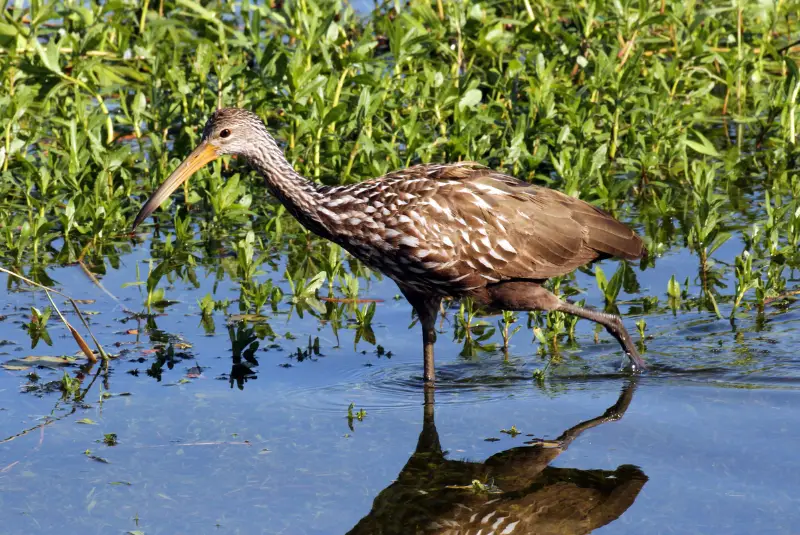
This oddly-named species is a large wading bird that lives in warmer regions of North and Central America.
Limpkins have an extended thin neck, which is covered in soft downy feathers. It’s used as a balancing tool, allowing Limpkins to keep their footing steady as they wade through water.
When they feel threatened or need to escape danger, they raise their head high into the air, creating the illusion of greater size and presence to deter predators.
Apart from their long necks, limpkins are known for their nocturnal calls, where they will cry out mournfully in the middle of the night.
Anhinga
Scientific name: Anhinga anhinga
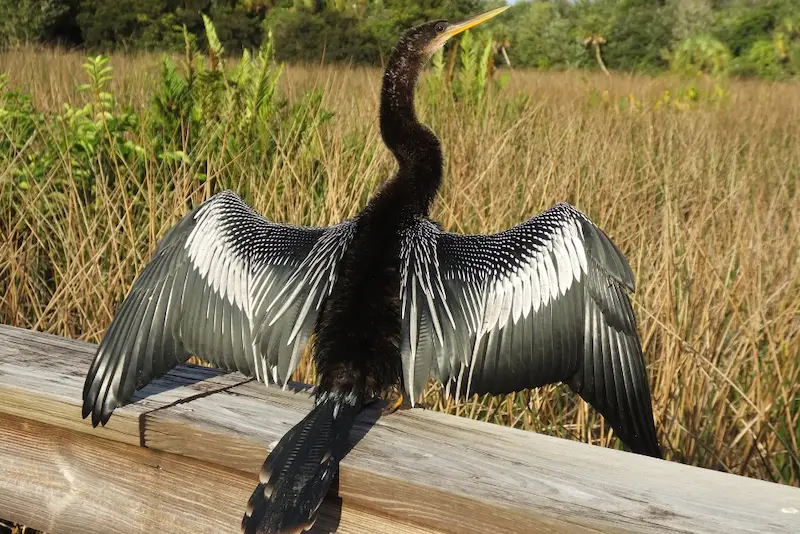
The Anhinga looks similar to a cormorant, but has a stretched out snake-like neck, which it uses to catch fish underwater.
It lives in swamps and freshwater ponds, and when it is in the water, it’s common to see only the head and neck protruding above the water surface.
Adult male Anhingas are almost entirely black, while females have a dark brown head and neck, as well as black body plumage.
American Bittern
Scientific name: Botaurus lentiginosus

American Bitterns are small herons that live in marshes and swamps, and that are extremely well camouflaged to blend in with aquatic vegetation.
Bitterns have a neck that is similar in length to the rest of their body, which they use to catch small fish and other animals in shallow water.
Since these water birds are very secretive, the best way to identify a bittern is by its call, which sounds similar to “oonk-ka-oonk.”
What are white birds with long necks?
The types of white birds that have elongated necks are:
- Great Egret
- Snowy Egret
- Cattle Egret
- White Ibis
- Wood Stork
- Whooping Crane
- Trumpeter Swan
- Snow Goose
If you’re not sure which one of these you saw, check out the detailed ID guide with photos above.
Final thoughts
These are the most common long-necked birds in the world. With so many bird species in the world, there are countless variations between different species.
Long necks can be advantageous for many reasons, from helping them hunt to giving them extra balance.
Whatever the reason, this only makes these birds even more fascinating to learn about!

